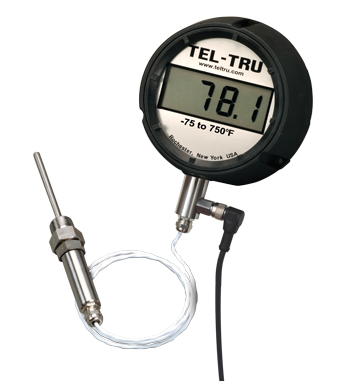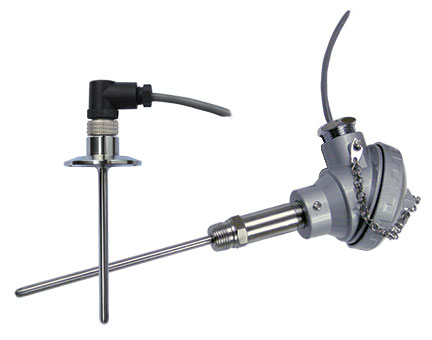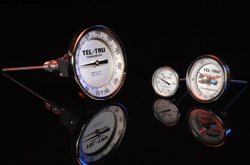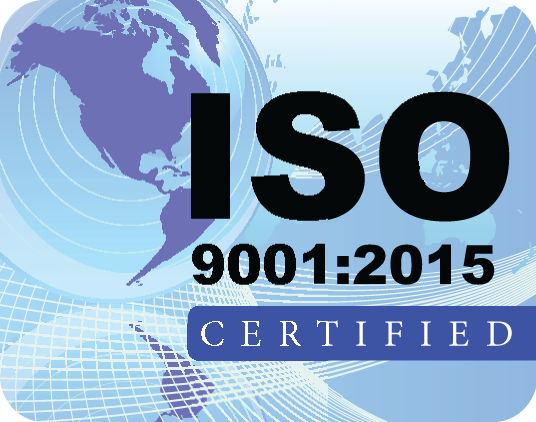Loop Powered Thermometer IntegrationLoop power is by far the most widespread method of providing power to devices that display a process temperature. Use of the industry standard 4-20mA loop for both device power and the signal path is ideal for system applications that require local display and remote connection to a control system or readout. |
|
|
If you’re designing a loop powered system for the first time or retro-fitting a loop powered temperature instrument into existing equipment, here are some pointers to help you choose the best solution. Local display with remote measurementDetermine if your application requires a display of the temperature at the point of measurement. It’s sometimes convenient to have a temperature readout right at the process while also reading the temperature remotely as with the Digi-Tel thermometer. This is typically done with the same sensor, it simply displays the temperature locally on an LCD or LED display, and also transmits a representation of the temperature through the 4-20mA loop to a control system that can read it remotely. Click for more information on the Digi-Tel line of thermometers with local display and 4-20mA output. |
 |
Remote measurement onlyIf local display isn’t required, many types of RTD assemblies can be used. These assemblies come in several configurations to allow flexibility for size and integration into the control system. The RTD sensors can be incorporated in a housing with a transmitter that converts the low level RTD signal to 4-20mA, or the transmitter can be located in a nearby control panel. Cllick for more information on choosing the best RTD configuration for your application. |
 |
Additional note:If the sensor is deployed in an area of high EMI (electro Magnetic Interference), the distance between the RTS sensor and transmitter should be minimized. Click for more information on transmitter considerations for minimizing the effects of EMI in your RTD installation. |
|
For additional product specifications, click here. |
|


